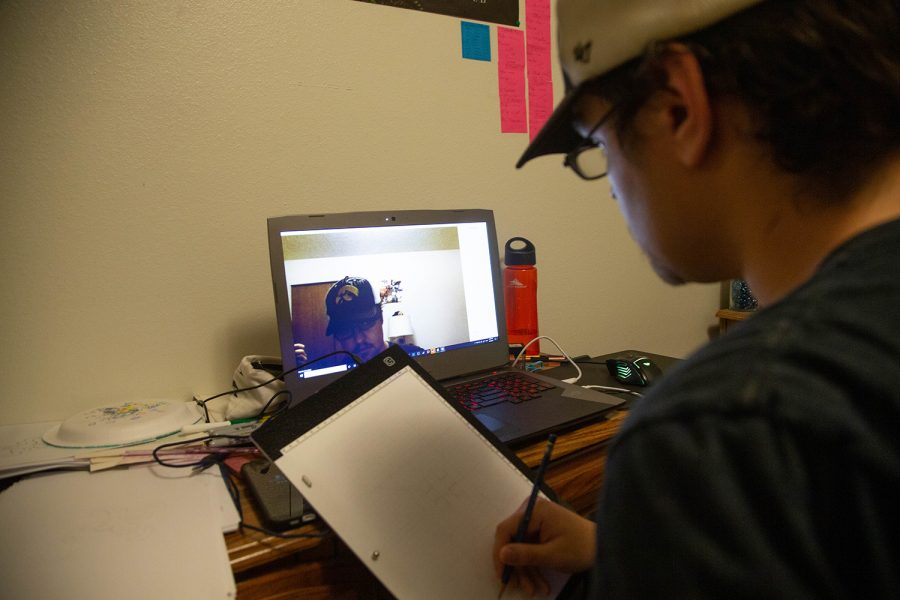Hawkeyes studying arts struggle to adapt to distance learning
Art students and instructors, used to hands-on ways of practicing their passion, have said they are dissatisfied as they adapt to curriculum changes with the shift to online learning.
Photo illustration by Hayden Froehlich
April 6, 2020
Avery Nabholz recently ended a vocal lesson early after the sound on her computer cut out. She had reached a pitch and dynamic that was too much for the audio system to compute.
It was one of the challenges the University of Iowa junior, who majors in vocal performance and music education, has faced while adjusting to online instruction — a switch that is part of the UI’s efforts to contain the spread of COVID-19.
Nabholz said online learning has negatively impacted her ability to work with vocal instructors. Online instruction, she said, has made it difficult for her professors to pick up on important aspects of vocal artistry such as dynamics, overtones, and phrasing over Zoom audio.
“I have been trying to remain as positive as I can during the quarantine, but the truth is that maintaining the meaningfulness of arts education via virtual platforms is extremely difficult,” Nabholz said. “So much of being a musician, vocal, instrumental, orchestral, or otherwise, relies on collaboration that is nearly impossible to replicate over Zoom.”
Nabholz isn’t the only Hawkeye feeling the effects of COVID-19 mitigation efforts. Dance and music majors no longer have a space to practice, art students lack important materials provided by the university, and many professors have had to completely rewrite their syllabi as the UI community adjusts to remote instruction.
Collaboration is also an important part of dance performances, and for dance major Allie Recht, online classes have posed similar challenges. The musicians who play piano for dance practices join over Zoom and lagging video can make it hard for dancers to stay in time with the music.
RELATED: COVID-19 and distance learning affect student-teaching experience
Recht also said that she’s struggled with spatial challenges when attending dance classes on Zoom or attempting to practice. Recht petitioned to stay in the dorms and currently lives in Stanley Hall.
“I have some space, but at the same time, I have two loft beds in my room and I only have one room to do everything in and it’s been kind of strange,” Recht said. “I can barely lay on the floor with my limbs extended without hitting something.”
Returning home for the remainder of the semester has also been problematic for music students. Vocal-performance major Megan Melia said practicing and learning along with six members of her family who are also conducting work or school from home has been overwhelming.
“I’m trying to be really mindful of not being disruptive or distracting them while practicing,” Melia said. “But that also means I’m not able to sing nearly as much as normal and I’m not able to go to a practice room at Voxman whenever I want, so that is difficult.”
While the technical and spatial difficulties of switching to online classes have created many obstacles for performing and studio art majors, the loss of important classes, performances, and exhibitions has been an emotional experience for both students and professors.
“I miss not being able to meet with students face to face,” UI printmaking lecturer Thomas Christison said. “It’s exciting to see a whole group of students become involved and light up about something new, and it’s hard to simulate that online.”
Nabholz said not being able to practice or perform music is particularly hard for students whose art is a huge part of their identity. In a time when stress and fear has skyrocketed, it’s been difficult for students to lose the art practices that they rely on for emotional support, she said.
“I miss being able to go to school and do what I love every single day,” Nabholz said. “I miss it more than I can describe, and I am confident that I won’t take it for granted when all of this is over.”



